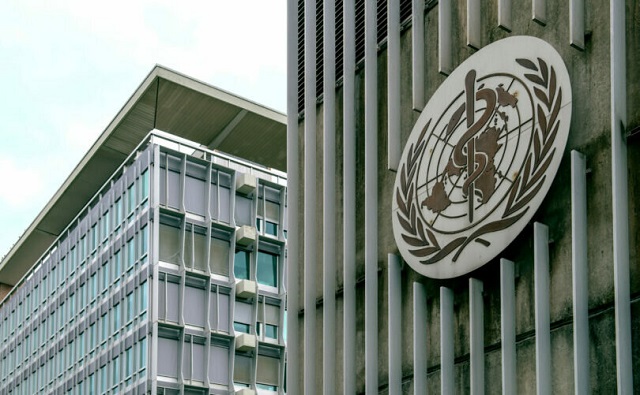Alberta
Ontario Cannabis Store reducing price margins to help pot businesses compete

TORONTO — The Ontario Cannabis Store says it will be reducing its price margins in a bid to help pot retailers compete with the illicit market.
The provincial pot distributor announced the margin change Thursday, saying it will be implemented in September.
The OCS estimates the move will put $35 million back in the hands of licensed pot companies this fiscal year and $60 million in the 2024 fiscal year. The OCS expects these amounts to compound annually in the years thereafter as the legal cannabis market grows.
The margin reduction will come from a fixed mark-up for each product category that will be standard for all producers and applied as a percentage above each product’s landed costs, which already take into account producers’ margins and excise taxes.
The margin drop was largely triggered by the strength of the illicit pot market, which still made up 43 per cent of Ontario’s cannabis market last March.
“This announcement will allow producers to better compete with the illicit market, particularly when it comes to dried flower,” said Charlie Bowman, chief executive and president of licensed producer Hexo Corp. in an email.
“This is an important step in giving Canada’s cannabis companies the upper hand over illegal producers.”
The average price for cannabis was $11.78 per gram at the start of 2019, shortly after legalization, but fell to $7.50 per gram in 2021, a November report from Deloitte Canada and cannabis research firms Hifyre and BDSA said.
The average price for vape cartridges has similarly fallen by 41 per cent from $32.02 per gram around legalization to $19 per gram a year later.
Pot producers, which are mostly unprofitable, have blamed illicit sellers, along with excise taxes and OCS margins, for a series of cuts they have made over the last few years. Many of them have laid off hundreds of staff, closed facilities, moved to rationalize their product mix and embarked on restructuring initiatives meant to reduce costs.
In the last week alone, Canopy Growth Corp., one of Canada’s most prominent pot companies, said it would lay off 800 workers as part of a transformation plan that will also include the closure of a former Hershey chocolate plant in Smiths Falls, Ont. it took over and the consolidation of some of its cultivation operations.
Then, licensed producer SNDL Inc. announced a layoff impacting 85 employees at its Olds, Alberta facility that it said would deliver $9 million in savings.
To combat further cuts and remain competitive with the illicit market, licensed producers have been slashing their prices, but complain the reductions are eating into their profits.
With prices in decline and profitability targets under pressure, licensed producers and retailers were pleased to hear about the OCS’s margin reduction.
However, the changes won’t come into effect until later in the year. The OCS said the delay is meant to give it and licensed producers time to consider changes to existing products and their release schedules.
But some have already made sense of the margin reductions and decided not to change their prices as a result.
“The OCS deserves credit for implementing these important changes which will accelerate industry sustainability and ultimately profitability as we intend to hold our prices due to the already highly competitive product pricing within the sector,” said Canopy Growth Corp. chief executive, in an emailed statement.
High Tide Inc., the cannabis company behind Canna Cabana stores, was equally pleased with the OCS’s decision, but said “more needs to be done especially by the federal government, to ensure the sustainability of Canada’s legal cannabis sector.”
“We look forward to further discussions with the OCS, regulators, as well as the federal and provincial governments about additional concrete measures that can be taken to ensure our industry continues to grow and create jobs while protecting public health.”
This report by The Canadian Press was first published Feb. 16, 2023.
Tara Deschamps, The Canadian Press
Alberta
Made in Alberta! Province makes it easier to support local products with Buy Local program

Show your Alberta side. Buy Local. |
When the going gets tough, Albertans stick together. That’s why Alberta’s government is launching a new campaign to benefit hard-working Albertans.
Global uncertainty is threatening the livelihoods of hard-working Alberta farmers, ranchers, processors and their families. The ‘Buy Local’ campaign, recently launched by Alberta’s government, encourages consumers to eat, drink and buy local to show our unified support for the province’s agriculture and food industry.
The government’s ‘Buy Local’ campaign encourages consumers to buy products from Alberta’s hard-working farmers, ranchers and food processors that produce safe, nutritious food for Albertans, Canadians and the world.
“It’s time to let these hard-working Albertans know we have their back. Now, more than ever, we need to shop local and buy made-in-Alberta products. The next time you are grocery shopping or go out for dinner or a drink with your friends or family, support local to demonstrate your Alberta pride. We are pleased tariffs don’t impact the ag industry right now and will keep advocating for our ag industry.”
Alberta’s government supports consumer choice. We are providing tools to help folks easily identify Alberta- and Canadian-made foods and products. Choosing local products keeps Albertans’ hard-earned dollars in our province. Whether it is farm-fresh vegetables, potatoes, honey, craft beer, frozen food or our world-renowned beef, Alberta has an abundance of fresh foods produced right on our doorstep.
Quick facts
- This summer, Albertans can support local at more than 150 farmers’ markets across the province and meet the folks who make, bake and grow our food.
- In March 2023, the Alberta government launched the ‘Made in Alberta’ voluntary food and beverage labelling program to support local agriculture and food sectors.
- Through direct connections with processors, the program has created the momentum to continue expanding consumer awareness about the ‘Made in Alberta’ label to help shoppers quickly identify foods and beverages produced in our province.
- Made in Alberta product catalogue website
Related information
Alberta
Province to expand services provided by Alberta Sheriffs: New policing option for municipalities

Expanding municipal police service options |
Proposed amendments would help ensure Alberta’s evolving public safety needs are met while also giving municipalities more options for local policing.
As first announced with the introduction of the Public Safety Statutes Amendment Act, 2024, Alberta’s government is considering creating a new independent agency police service to assume the police-like duties currently performed by Alberta Sheriffs. If passed, Bill 49 would lay additional groundwork for the new police service.
Proposed amendments to the Police Act recognize the unique challenges faced by different communities and seek to empower local governments to adopt strategies that effectively respond to their specific safety concerns, enhancing overall public safety across the province.
If passed, Bill 49 would specify that the new agency would be a Crown corporation with an independent board of directors to oversee its day-to-day operations. The new agency would be operationally independent from the government, consistent with all police services in Alberta. Unlike the Alberta Sheriffs, officers in the new police service would be directly employed by the police service rather than by the government.
“With this bill, we are taking the necessary steps to address the unique public safety concerns in communities across Alberta. As we work towards creating an independent agency police service, we are providing an essential component of Alberta’s police framework for years to come. Our aim is for the new agency is to ensure that Albertans are safe in their communities and receive the best possible service when they need it most.”
Additional amendments would allow municipalities to select the new agency as their local police service once it becomes fully operational and the necessary standards, capacity and frameworks are in place. Alberta’s government is committed to ensuring the new agency works collaboratively with all police services to meet the province’s evolving public safety needs and improve law enforcement response times, particularly in rural communities. While the RCMP would remain the official provincial police service, municipalities would have a new option for their local policing needs.
Once established, the agency would strengthen Alberta’s existing policing model and complement the province’s current police services, which include the RCMP, Indigenous police services and municipal police. It would help fill gaps and ensure law enforcement resources are deployed efficiently across the province.
Related information
-

 Autism2 days ago
Autism2 days agoRFK Jr. Exposes a Chilling New Autism Reality
-

 COVID-192 days ago
COVID-192 days agoCanadian student denied religious exemption for COVID jab takes tech school to court
-

 2025 Federal Election2 days ago
2025 Federal Election2 days agoNeil Young + Carney / Freedom Bros
-

 International2 days ago
International2 days agoUK Supreme Court rules ‘woman’ means biological female
-

 2025 Federal Election1 day ago
2025 Federal Election1 day agoTucker Carlson Interviews Maxime Bernier: Trump’s Tariffs, Mass Immigration, and the Oncoming Canadian Revolution
-

 Health2 days ago
Health2 days agoWHO member states agree on draft of ‘pandemic treaty’ that could be adopted in May
-

 espionage1 day ago
espionage1 day agoEx-NYPD Cop Jailed in Beijing’s Transnational Repatriation Plot, Canada Remains Soft Target
-

 Business1 day ago
Business1 day agoChina, Mexico, Canada Flagged in $1.4 Billion Fentanyl Trade by U.S. Financial Watchdog





